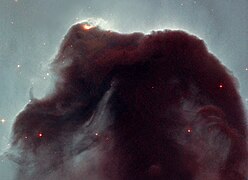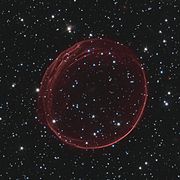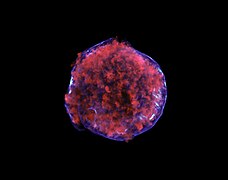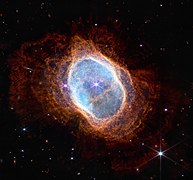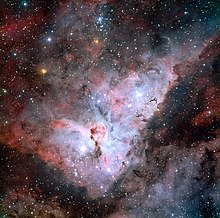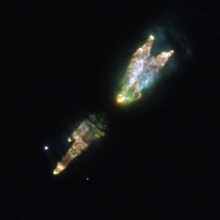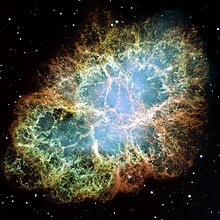To write in connection the basis is cause as the ability to apprehend the cost of memory as the body of life. This brings to mind as living in a state of being and acting it out as a human being on Earth. Delivering Space Travel from earth as hemisphere to the space between in a natural balance and without aspect to a physical space craft belonging to the natural world and natural material of that earth too heard: The Mind, Body and soul?
The laughter of much is intended to gain the sight of whom may have had the translated experience throughout reality to be indeed standing to gain today, a world of comprehended at date. These passages are backed by the recorded tolls that have drawn to shed the laughter and comprehend the inconceivable. As these bring to hand a new toll it is the horror that has drawn I to what is the passage of the echo in such placid review that even I have held to shed. Humanity may bring nothing to such grace as the liberal dismissal of just the mind would relieve the reality and cause a caustic measure.
Not replacing word to vase I do not suggest a meaning and I am not in limited understanding of star to ship and movie to vice as the bank of suggestion in opposing the next tell as a phone call of number to paint of down to bird.
In addition I will bring forward the Egyptian balance as the “Ba” to what is held in hand to the actual sight on this earth, the rest is subjective to science and the proof wherein as only the cloning will bring to term to IBM the Hollywood Lot to science fiction it out as the draw remains in the cloud of what is on earth to observe at 3.141 as written by Srinivasa Ramanujan - Wikipedia: "The International Business Machines Corporation is an American multinational technology corporation headquartered in Armonk, New York, with operations in over 171 countries.” Wikipedia
Note to task.
Jonah and the whale to Albert Einstein's work on ‘The Black Hole’ and addition to Albert Einstein was not Jonah in the whale.
JONAH CHAPTER 1 KJV - King James Bible :
Black hole - Wikipedia
Dendera light
"The Dendera light is a motif in the Hathor temple at Dendera in Egypt. It depicts the Egyptian creation myth, and the text surrounding the pieces confirm this. The motif became famous when the History Channel claimed it depicts an ancient light bulb, something that the text around the motif disproves.[1][2][3]
The temple contains several reliefs depicting Harsomtus, in the form of a snake, emerging from a lotus flower which is usually attached to the bow of a barge. The so-called dendera light is a variation of this motif, showing Harsomtus in an oval container called hn, which might represent the womb of Nut.[4][5][6] Sometimes a djed pillar supports the snake or the container. A closely related motif is "god resting on the lotus flower".
Swami (Sanskrit: स्वामी svāmī [sʋaːmiː]; sometimes abbreviated sw.) in Hinduism is an honorific title given to a male or female ascetic who has chosen the path of renunciation (sannyāsa),[1] or has been initiated into a religious monastic order of Vaishnavas.[2] It is used either before or after the subject's name (usually an adopted religious name).
The meaning of the Sanskrit root of the word swami is "[he who is] one with his self" (swa stands for "self"),[3] and can roughly be translated as "he/she who knows and is master of himself/herself".[1] The term is often attributed to someone who has achieved mastery of a particular yogic system or demonstrated profound devotion (bhakti) to one or more Hindu gods.[1] The Oxford English Dictionary gives the etymology as:[4]
As a direct form of address, or as a stand-in for a swami's name, it is often rendered Swamiji (also Swami-ji or Swami Ji).
In modern Gaudiya Vaishnavism, Swami is also one of the 108 names for a sannyasi given in Bhaktisiddhanta Sarasvati's Gaudiya Kanthahara, along with Goswami, also traditionally used as an honorific title.[5]
Swami is also the surname of the Bairagi caste in Haryana, Uttar Pradesh, and Rajasthan. In Bengali, the word (pronounced [ˈʃami]), while carrying its original meaning, also has the meaning of "husband" in another context. The word also means "husband" in Malay, in which it is spelled suami,[6] and in Khmer, Assamese and Odiya. The Thai word for "husband", sami (สามี) or sawami (สวามี), and the Tagalogword for "spouse", asawa, are cognate words.[citation needed]
Nebula
A nebula ('cloud' or 'fog' in Latin;[1] pl. nebulae, nebulæ or nebulas[2][3][4][5]) is a distinct luminescent part of interstellar medium, which can consist of ionized, neutral or molecular hydrogen and also cosmic dust. Nebulae are often star-forming regions, such as in the "Pillars of Creation" in the Eagle Nebula. In these regions, the formations of gas, dust, and other materials "clump" together to form denser regions, which attract further matter, and eventually will become dense enough to form stars. The remaining material is then thought to form planets and other planetary system objects.
Most nebulae are of vast size; some are hundreds of light-years in diameter. A nebula that is visible to the human eye from Earth would appear larger, but no brighter, from close by.[6] The Orion Nebula, the brightest nebula in the sky and occupying an area twice the angular diameter of the full Moon, can be viewed with the naked eye but was missed by early astronomers.[7] Although denser than the space surrounding them, most nebulae are far less dense than any vacuum created on Earth – a nebular cloud the size of the Earth would have a total mass of only a few kilograms. Earth's air has a density of approximately 1019 molecules per cubic centimeter; by contrast the densest nebulae can have densities of 10,000 molecules per cubic centimeter. Many nebulae are visible due to fluorescence caused by embedded hot stars, while others are so diffused that they can be detected only with long exposures and special filters. Some nebulae are variably illuminated by T Tauri variable stars.
Originally, the term "nebula" was used to describe any diffused astronomical object, including galaxies beyond the Milky Way. The Andromeda Galaxy, for instance, was once referred to as the Andromeda Nebula (and spiral galaxies in general as "spiral nebulae") before the true nature of galaxies was confirmed in the early 20th century by Vesto Slipher, Edwin Hubble and others. Edwin Hubble discovered that most nebulae are associated with stars and illuminated by starlight. He also helped categorize nebulae based on the type of light spectra they produced.[8]
Observational history[edit]
Around 150 AD, Ptolemy recorded, in books VII–VIII of his Almagest, five stars that appeared nebulous. He also noted a region of nebulosity between the constellationsUrsa Major and Leo that was not associated with any star.[9] The first true nebula, as distinct from a star cluster, was mentioned by the Muslim Persian astronomer Abd al-Rahman al-Sufi, in his Book of Fixed Stars (964).[10] He noted "a little cloud" where the Andromeda Galaxy is located.[11] He also cataloged the Omicron Velorumstar cluster as a "nebulous star" and other nebulous objects, such as Brocchi's Cluster.[10] The supernova that created the Crab Nebula, the SN 1054, was observed by Arabic and Chinese astronomers in 1054.[12][13]
In 1610, Nicolas-Claude Fabri de Peiresc discovered the Orion Nebula using a telescope. This nebula was also observed by Johann Baptist Cysat in 1618. However, the first detailed study of the Orion Nebula was not performed until 1659, by Christiaan Huygens, who also believed he was the first person to discover this nebulosity.[11]
In 1715, Edmond Halley published a list of six nebulae.[14] This number steadily increased during the century, with Jean-Philippe de Cheseaux compiling a list of 20 (including eight not previously known) in 1746. From 1751 to 1753, Nicolas-Louis de Lacaille cataloged 42 nebulae from the Cape of Good Hope, most of which were previously unknown. Charles Messier then compiled a catalog of 103 "nebulae" (now called Messier objects, which included what are now known to be galaxies) by 1781; his interest was detecting comets, and these were objects that might be mistaken for them.[15]
The number of nebulae was then greatly increased by the efforts of William Herschel and his sister Caroline Herschel. Their Catalogue of One Thousand New Nebulae and Clusters of Stars[16] was published in 1786. A second catalog of a thousand was published in 1789 and the third and final catalog of 510 appeared in 1802. During much of their work, William Herschel believed that these nebulae were merely unresolved clusters of stars. In 1790, however, he discovered a star surrounded by nebulosity and concluded that this was a true nebulosity, rather than a more distant cluster.[15]
Beginning in 1864, William Huggins examined the spectra of about 70 nebulae. He found that roughly a third of them had the emission spectrum of a gas. The rest showed a continuous spectrum and thus were thought to consist of a mass of stars.[17][18] A third category was added in 1912 when Vesto Slipher showed that the spectrum of the nebula that surrounded the star Merope matched the spectra of the Pleiades open cluster. Thus the nebula radiates by reflected star light.[19]
About 1923, following the Great Debate, it had become clear that many "nebulae" were in fact galaxies far from the Milky Way.
Slipher and Edwin Hubble continued to collect the spectra from many different nebulae, finding 29 that showed emission spectra and 33 that had the continuous spectra of star light.[18] In 1922, Hubble announced that nearly all nebulae are associated with stars, and their illumination comes from star light. He also discovered that the emission spectrum nebulae are nearly always associated with stars having spectral classifications of B or hotter (including all O-type main sequence stars), while nebulae with continuous spectra appear with cooler stars.[20] Both Hubble and Henry Norris Russell concluded that the nebulae surrounding the hotter stars are transformed in some manner.[18]
Formation[edit]
There are a variety of formation mechanisms for the different types of nebulae. Some nebulae form from gas that is already in the interstellar medium while others are produced by stars. Examples of the former case are giant molecular clouds, the coldest, densest phase of interstellar gas, which can form by the cooling and condensation of more diffuse gas. Examples of the latter case are planetary nebulae formed from material shed by a star in late stages of its stellar evolution.
Star-forming regions are a class of emission nebula associated with giant molecular clouds. These form as a molecular cloud collapses under its own weight, producing stars. Massive stars may form in the center, and their ultraviolet radiation ionizes the surrounding gas, making it visible at optical wavelengths. The region of ionized hydrogen surrounding the massive stars is known as an H II region while the shells of neutral hydrogen surrounding the H II region are known as photodissociation region. Examples of star-forming regions are the Orion Nebula, the Rosette Nebula and the Omega Nebula. Feedback from star-formation, in the form of supernova explosions of massive stars, stellar winds or ultraviolet radiation from massive stars, or outflows from low-mass stars may disrupt the cloud, destroying the nebula after several million years.
Other nebulae form as the result of supernova explosions; the death throes of massive, short-lived stars. The materials thrown off from the supernova explosion are then ionized by the energy and the compact object that its core produces. One of the best examples of this is the Crab Nebula, in Taurus. The supernova event was recorded in the year 1054 and is labeled SN 1054. The compact object that was created after the explosion lies in the center of the Crab Nebula and its core is now a neutron star.
Still other nebulae form as planetary nebulae. This is the final stage of a low-mass star's life, like Earth's Sun. Stars with a mass up to 8–10 solar masses evolve into red giants and slowly lose their outer layers during pulsations in their atmospheres. When a star has lost enough material, its temperature increases and the ultraviolet radiation it emits can ionize the surrounding nebula that it has thrown off. The Sun will produce a planetary nebula and its core will remain behind in the form of a white dwarf.
Types[edit]
Classical types[edit]
Objects named nebulae belong to 4 major groups. Before their nature was understood, galaxies ("spiral nebulae") and star clusters too distant to be resolved as stars were also classified as nebulae, but no longer are.
- H II regions, large diffuse nebulae containing ionized hydrogen
- Planetary nebulae
- Supernova remnant (e.g., Crab Nebula)
- Dark nebula
Not all cloud-like structures are named nebulae; Herbig–Haro objects are an example.
Flux Nebula[edit]
Diffuse nebulae[edit]
Most nebulae can be described as diffuse nebulae, which means that they are extended and contain no well-defined boundaries.[22] Diffuse nebulae can be divided into emission nebulae, reflection nebulae and dark nebulae.
Visible light nebulae may be divided into emission nebulae, which emit spectral line radiation from excited or ionized gas (mostly ionized hydrogen);[23] they are often called H II regions, H II referring to ionized hydrogen), and reflection nebulae which are visible primarily due to the light they reflect.
Reflection nebulae themselves do not emit significant amounts of visible light, but are near stars and reflect light from them.[23] Similar nebulae not illuminated by stars do not exhibit visible radiation, but may be detected as opaque clouds blocking light from luminous objects behind them; they are called dark nebulae.[23]
Although these nebulae have different visibility at optical wavelengths, they are all bright sources of infrared emission, chiefly from dust within the nebulae.[23]
Planetary nebulae[edit]
Planetary nebulae are the remnants of the final stages of stellar evolution for mid-mass stars (varying in size between 0.5-~8 solar masses). Evolved asymptotic giant branch stars expel their outer layers outwards due to strong stellar winds, thus forming gaseous shells while leaving behind the star's core in the form of a white dwarf.[23] Radiation from the hot white dwarf excites the expelled gases, producing emission nebulae with spectra similar to those of emission nebulae found in star formation regions.[23] They are H II regions, because mostly hydrogen is ionized, but planetary are denser and more compact than nebulae found in star formation regions.[23]
Planetary nebulae were given their name by the first astronomical observers who were initially unable to distinguish them from planets, and who tended to confuse them with planets, which were of more interest to them. Our Sun is expected to spawn a planetary nebula about 12 billion years after its formation.[24]
Protoplanetary nebula[edit]
A protoplanetary nebula (PPN) is an astronomical object at the short-lived episode during a star's rapid stellar evolutionbetween the late asymptotic giant branch (LAGB) phase and the following planetary nebula (PN) phase.[25] During the AGB phase, the star undergoes mass loss, emitting a circumstellar shell of hydrogen gas. When this phase comes to an end, the star enters the PPN phase.
The PPN is energized by the central star, causing it to emit strong infrared radiation and become a reflection nebula. Collimated stellar winds from the central star shape and shock the shell into an axially symmetric form, while producing a fast moving molecular wind.[26] The exact point when a PPN becomes a planetary nebula (PN) is defined by the temperature of the central star. The PPN phase continues until the central star reaches a temperature of 30,000 K, after which it is hot enough to ionize the surrounding gas.[27]
Supernova remnants[edit]
A supernova occurs when a high-mass star reaches the end of its life. When nuclear fusion in the core of the star stops, the star collapses. The gas falling inward either rebounds or gets so strongly heated that it expands outwards from the core, thus causing the star to explode.[23] The expanding shell of gas forms a supernova remnant, a special diffuse nebula.[23] Although much of the optical and X-ray emission from supernova remnants originates from ionized gas, a great amount of the radio emission is a form of non-thermal emission called synchrotron emission.[23] This emission originates from high-velocity electrons oscillating within magnetic fields.





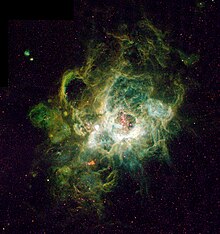
![Herbig–Haro HH 161 and HH 164.[21]](https://upload.wikimedia.org/wikipedia/commons/thumb/2/27/Hubble_Sees_a_Stellar_%22Sneezing_Fit%22_%2811467249715%29.jpg/342px-Hubble_Sees_a_Stellar_%22Sneezing_Fit%22_%2811467249715%29.jpg)

